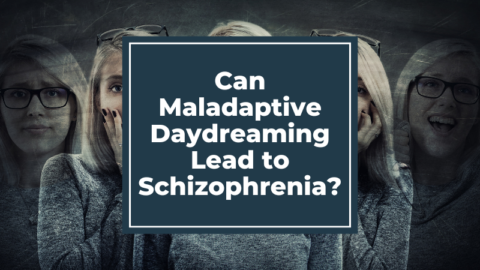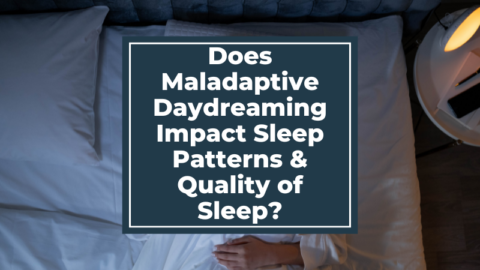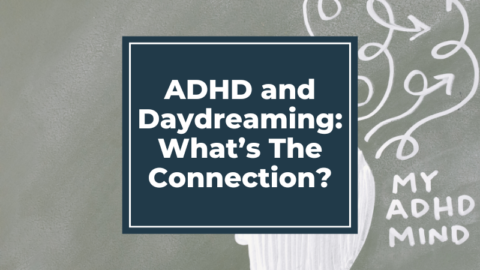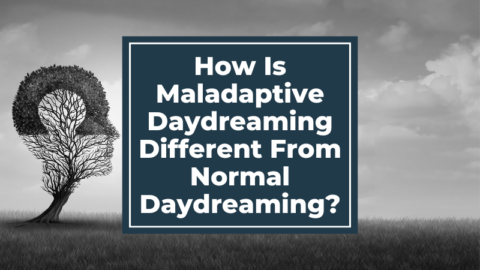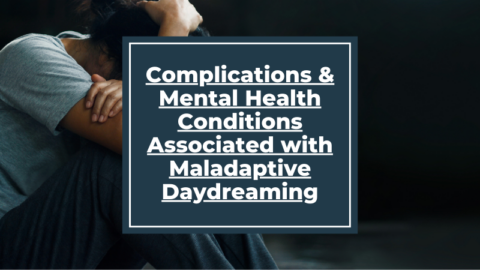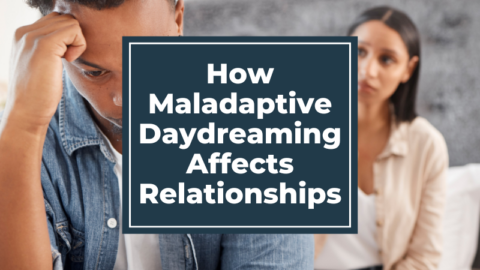While there is no specific therapy designed exclusively for maladaptive daydreaming, several therapeutic approaches have shown promise in helping individuals manage and reduce maladaptive daydreaming tendencies.
Some of these approaches include:
1. Cognitive-Behavioral Therapy (CBT)
Cognitive-Behavioral Therapy (CBT) focuses on identifying and modifying unhelpful thought patterns and behaviors. In the context of maladaptive daydreaming, CBT can help individuals identify triggers, challenge unrealistic beliefs, and develop alternative coping strategies.
CBT is a widely used and effective form of psychotherapy that focuses on the connection between thoughts, feelings, and behaviors. It is a goal-oriented approach that helps individuals identify and modify negative or unhelpful patterns of thinking and behavior, leading to positive changes in their emotions and overall well-being.
The underlying premise of CBT is that our thoughts and beliefs about ourselves, others, and the world around us greatly influence our emotions and behaviors. By working collaboratively with a trained CBT therapist, individuals can gain a deeper understanding of their thought patterns and develop skills to challenge and replace negative thoughts with more realistic and positive ones.
CBT is structured and time-limited, typically consisting of a set number of sessions that focus on specific goals. The therapist and client work together to identify problematic thoughts and behaviors, explore their origins, and develop strategies to address them. Techniques used in CBT may include cognitive restructuring, which involves examining and challenging negative thoughts, as well as behavioral experiments and exposure therapy to address specific fears or avoidance behaviors.
CBT is effective in treating a wide range of mental health conditions, including depression, anxiety disorders, phobias, post-traumatic stress disorder (PTSD), obsessive-compulsive disorder (OCD), and eating disorders, among others. It is a highly structured and evidence-based approach that emphasizes active participation and the application of learned skills outside of therapy sessions.
The success of CBT lies in its emphasis on empowering individuals to become their own therapists, equipping them with practical tools and strategies to navigate life’s challenges and improve their overall well-being. By changing negative thought patterns and adopting healthier behaviors, individuals can experience a significant reduction in distressing symptoms and an improvement in their quality of life.
2. Mindfulness-Based Interventions
Mindfulness practices and mindfulness-based therapies can help individuals develop present-moment awareness and reduce excessive daydreaming. Mindfulness can enhance self-regulation skills, increase attentional control, and promote emotional well-being.
Mindfulness-based interventions (MBIs) are therapeutic approaches that incorporate principles and practices of mindfulness into the treatment of various mental health conditions. Mindfulness, at its core, involves paying attention to the present moment in a non-judgmental and accepting way. MBIs aim to cultivate this quality of mindful awareness to enhance psychological well-being and promote positive changes in individuals’ thoughts, emotions, and behaviors.
One of the most well-known mindfulness-based interventions is Mindfulness-Based Stress Reduction (MBSR), developed by Jon Kabat-Zinn. MBSR combines mindfulness meditation, body awareness, and gentle movement practices to help individuals reduce stress, manage pain, and improve overall well-being. It has been widely used in the treatment of anxiety, depression, chronic pain, and other stress-related conditions.
Another popular mindfulness-based intervention is Mindfulness-Based Cognitive Therapy (MBCT), which integrates mindfulness practices with cognitive-behavioral therapy techniques. MBCT was originally developed as a relapse prevention program for individuals with recurrent depression, but it has also shown effectiveness in the treatment of anxiety disorders, substance use disorders, and other mental health conditions.
Other mindfulness-based interventions include Dialectical Behavior Therapy (DBT), Acceptance and Commitment Therapy (ACT), and Mindfulness-Based Relapse Prevention (MBRP), among others. These interventions utilize mindfulness techniques to target specific issues such as emotion regulation, acceptance of difficult experiences, and prevention of relapse.
The practice of mindfulness involves intentionally bringing attention to the present moment, observing thoughts and sensations without judgment, and cultivating a non-reactive and compassionate stance towards oneself and others. By cultivating mindful awareness, individuals can develop greater insight into their thoughts and emotions, become more aware of unhelpful patterns, and make conscious choices to respond to life’s challenges in more adaptive ways.
Research has shown that mindfulness-based interventions can have numerous benefits, including reduced symptoms of anxiety and depression, improved emotion regulation, increased self-compassion, and enhanced overall well-being. These interventions are often delivered in a group format, with participants engaging in mindfulness exercises, discussions, and experiential learning. Incorporating mindfulness into therapy can be a valuable tool for self-exploration, personal growth, and improved mental health outcomes.
3. Habit Reversal Training (HRT)
HRT is a behavioral therapy technique often used for managing repetitive behaviors. It involves identifying maladaptive daydreaming patterns, replacing them with healthier alternatives, and developing strategies to interrupt and redirect the behavior.
Habit Reversal Training (HRT) is a behavioral therapy technique primarily used to treat various repetitive behaviors and habits, such as tics, nail-biting, hair-pulling (trichotillomania), skin-picking (excoriation disorder), and other similar conditions. It is based on the principle of replacing the unwanted habit with a more constructive or incompatible behavior.
HRT involves several key components. First, individuals are taught to identify and become aware of the triggers or situations that lead to the unwanted habit. This awareness helps in recognizing the early signs or cues that precede the habit. Second, individuals learn to develop a competing response, which is a specific alternative behavior that is incompatible with the unwanted habit. The competing response serves to disrupt the habitual pattern and prevent the occurrence of the undesired behavior. For example, if the habit is hair-pulling, the competing response could be clenching fists or holding onto a stress ball.
The next step in HRT is practicing the competing response in a structured manner. This involves repeatedly engaging in the competing response whenever the triggers or cues for the unwanted habit are encountered. The goal is to reinforce the new behavior and weaken the old habit over time. With consistent practice and reinforcement, the competing response becomes more automatic and replaces the undesired habit.
In addition to the core components of identifying triggers and developing competing responses, HRT may also involve strategies such as relaxation techniques, self-monitoring, and social support. These additional elements can enhance the effectiveness of the intervention and provide individuals with additional tools to manage their behaviors.
HRT is typically conducted under the guidance of a trained therapist who specializes in behavioral therapies. The therapist helps individuals identify their specific habits and develop tailored treatment plans. They provide education, support, and guidance throughout the process, helping individuals learn and implement the techniques effectively.
Research has shown that Habit Reversal Training can be highly effective in reducing or eliminating unwanted habits and improving overall functioning and quality of life. It is considered an evidence-based treatment for a range of habit-related disorders. However, like any therapy, the success of HRT may vary depending on individual factors and the specific habit being targeted.
4. Acceptance and Commitment Therapy (ACT):
ACT focuses on accepting distressing thoughts and feelings while taking steps towards values-driven behavior. It can help individuals develop a more flexible and mindful relationship with their daydreaming tendencies.
Acceptance and Commitment Therapy (ACT) is a form of psychotherapy that focuses on helping individuals develop psychological flexibility and live a more meaningful life. It is based on the principles of mindfulness and acceptance, along with the integration of behavioral change strategies.
ACT aims to help individuals accept their thoughts and emotions rather than trying to eliminate or suppress them. The therapy emphasizes that psychological suffering is often caused by the struggle against unwanted thoughts and feelings and that learning to accept them can lead to greater well-being.
In ACT, individuals are encouraged to identify their core values and commit to taking action that aligns with those values. This involves clarifying what truly matters to them in various life domains, such as relationships, work, personal growth, and health. By identifying and committing to their values, individuals can make choices and take actions that are in line with their authentic selves.
The therapy also emphasizes the development of mindfulness skills, which involve being fully present in the moment and non-judgmentally observing one’s thoughts and feelings. Mindfulness helps individuals cultivate an attitude of acceptance and openness, allowing them to respond to their experiences in a more flexible and adaptive way.
ACT utilizes various techniques and exercises to promote psychological flexibility. These may include mindfulness meditation, cognitive defusion (challenging the impact of thoughts), acceptance exercises, values clarification exercises, and committed action planning.
ACT has been shown to be effective in treating a wide range of mental health conditions, including anxiety disorders, depression, substance abuse, chronic pain, and stress-related problems. It has also been used in diverse settings, such as individual therapy, group therapy, and workplace interventions.
It is important to note that ACT is typically delivered by trained therapists who can guide individuals through the therapy process and tailor it to their specific needs. The therapist provides support, guidance, and skill-building exercises to help individuals develop psychological flexibility and apply the principles of ACT in their daily lives.
5. Eye Movement Desensitization and Reprocessing (EMDR)
EMDR is a therapy primarily used for trauma-related conditions but may also be beneficial for maladaptive daydreaming rooted in trauma. It involves bilateral stimulation techniques while processing distressing memories or triggers.
Eye Movement Desensitization and Reprocessing (EMDR) is a psychotherapy approach that was initially developed to treat post-traumatic stress disorder (PTSD). It has since been used effectively to address a range of other mental health conditions, including anxiety, phobias, depression, and traumatic experiences.
EMDR is based on the belief that traumatic experiences can become “stuck” or improperly processed in the brain, leading to emotional and psychological distress. The therapy aims to facilitate the reprocessing of these traumatic memories and alleviate associated symptoms.
During an EMDR session, the individual recalls distressing memories while simultaneously engaging in bilateral stimulation, which typically involves following the therapist’s finger movements with their eyes. Other forms of bilateral stimulation, such as auditory tones or tapping, can also be used. This bilateral stimulation is thought to activate the brain’s information-processing system and facilitate the integration of traumatic memories into a more adaptive and less distressing form.
The therapist guides the individual through a series of sets of eye movements or other bilateral stimulation while encouraging them to explore the associated thoughts, emotions, and sensations that arise. The goal is to help the individual process and reframe the traumatic memories, allowing for a more adaptive resolution and reducing the emotional distress associated with them.
EMDR also incorporates elements of cognitive restructuring, where negative beliefs or self-perceptions related to the traumatic event are addressed and reframed. The therapy seeks to replace negative or maladaptive beliefs with more positive and empowering ones.
EMDR is typically delivered over a series of sessions, and the number of sessions required may vary depending on the individual and the complexity of their traumatic experiences. The therapy is generally well-tolerated, but it is important to work with a trained EMDR therapist who can ensure the appropriate application and provide support throughout the process.
It is worth noting that EMDR is a specialized therapeutic approach, and not all therapists are trained in its techniques. Therefore, it is important to seek out a qualified EMDR therapist who has received proper training and certification to ensure the best possible outcomes.
6. Psychoeducation
Learning about maladaptive daydreaming, its causes, and its impact can provide insight and understanding, which can be empowering in managing the condition.
Psychoeducation refers to the process of providing individuals, families, or communities with information and knowledge about mental health conditions, treatment options, and strategies for managing symptoms. It aims to empower individuals by increasing their understanding of their own mental health and fostering their ability to make informed decisions about their well-being.
In psychoeducation, mental health professionals, such as therapists or psychologists, share information about various aspects of mental health, including common mental health disorders, their causes, symptoms, and available treatments. They may also discuss factors that contribute to mental health, such as stress, lifestyle, and social support.
The goals of psychoeducation include:
- Education and Awareness: By providing accurate and evidence-based information, psychoeducation helps individuals understand their mental health condition or concerns. It helps reduce stigma and misconceptions and encourages open dialogue about mental health.
- Self-Management: Psychoeducation equips individuals with practical tools and strategies to manage their mental health. It may involve teaching coping skills, relaxation techniques, problem-solving strategies, and stress management techniques. This enables individuals to take an active role in their own mental health care.
- Treatment Engagement: Psychoeducation promotes awareness and understanding of available treatment options. It helps individuals make informed decisions about seeking professional help, adhering to treatment plans, and actively participating in therapy or other interventions.
- Prevention and Early Intervention: By raising awareness about mental health and recognizing early signs and symptoms, psychoeducation can facilitate early intervention and prevention of mental health problems. It may focus on identifying risk factors, promoting resilience, and developing healthy coping mechanisms.
Psychoeducation can take various forms, including individual or group therapy sessions, workshops, educational materials, online resources, support groups, or community outreach programs. It is often integrated into comprehensive treatment plans and can be tailored to specific populations or mental health conditions.
Overall, psychoeducation plays a vital role in promoting mental health literacy, reducing stigma, and empowering individuals to actively manage their mental well-being. By providing knowledge and skills, it helps individuals develop resilience, make informed decisions, and improve their overall quality of life.
What Kinds of Professionals Are Qualified To Do These Treatments?
Several professionals can provide treatments and support for maladaptive daydreaming. Depending on the type of treatment that you wish to pursue, a specialist may be needed. Here are some qualified professionals who can help:
- Psychologists: Psychologists are mental health professionals who specialize in assessing and treating various mental health conditions. They can provide therapy, such as cognitive-behavioral therapy (CBT) or other evidence-based approaches, to help individuals manage maladaptive daydreaming.
- Psychiatrists: Psychiatrists are medical doctors specializing in mental health. They can diagnose mental health conditions, prescribe medication if necessary, and provide psychotherapy alongside medication management.
- Counselors or Therapists: Licensed counselors or therapists with training in cognitive-behavioral therapy (CBT), mindfulness-based approaches, or other relevant modalities can provide individual or group therapy for individuals with maladaptive daydreaming.
- Social Workers: Licensed clinical social workers (LCSWs) or licensed social workers (LSWs) can provide therapy and support services for individuals struggling with maladaptive daydreaming. They may utilize various therapeutic techniques to address underlying issues and develop coping strategies.
- Occupational Therapists: Occupational therapists focus on helping individuals improve their daily functioning and overall well-being. They can assist individuals with maladaptive daydreaming in developing skills and strategies to manage their condition and engage in meaningful activities.
When seeking professional help, it’s important to ensure that the professional you choose has experience and expertise in treating maladaptive daydreaming or related conditions. Consider their qualifications, specialties, and approach to treatment. It may be helpful to schedule an initial consultation to discuss your specific concerns and determine if the professional is a good fit for your needs.


